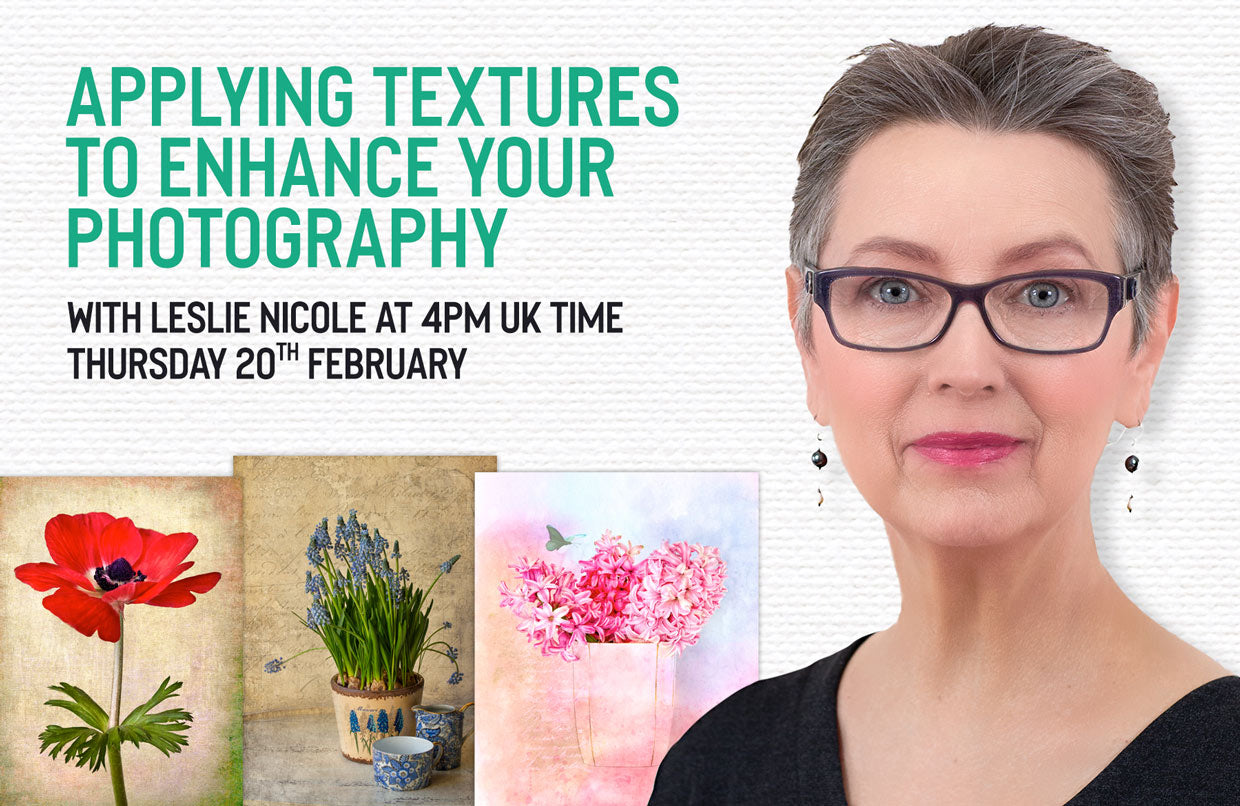
Video tutorial with Leslie Nicole on applying textures to your photography.
On February 20th I had my first live webinar class. The webinar was hosted by Design Cuts.
I wanted this webinar to be more than just "an introduction to textures" so I really packed a lot into roughly an hour and a quarter! I cover both introductory methods and advanced techniques. It's pretty jam packed, so if you are new to textures, don't get overwhelmed. Think of it as a road map. There will be more webinars and classes in the near future!
I was extremely touched by the wonderful comments and feedback both in the webinar chat and on Facebook and via email. Thank you all for the encouragement!
Tech Tips
It's recommended that you use Chrome as your browser to watch the recording. If you have any technical difficulties, try restarting your browser and even clearing your cache.
Resources
In the final tutorial in the session, I show how I created this textured hyacinth photograph.
- Watercolor texture from the Autumn Rain Textures collection.
- Vintage French Script from the Essential Vintage French Graphicscollection.
- A Vintage Butterfly from the Bees 'n Butterflies collection.






Leslie Nicole
May 15, 2020
Hi Sabeen,
Some of my textures that are older are smaller than some of today’s larger sensor cameras.
You would need to do a small segment print test to see if the enlargement suits your needs. What are the pixel dimensions of the Nikon D850?
Topaz Gigapixel does an amazing job upsizing. I’ve been really impressed with it! I thought about up-sizing some of the collections, but many people don’t have larger sensors.
My later collections are quite large and should be fine being enlarged even more.
By the way, the bit depth is referring to whether it is 8 bit or 16 bit, which is not the same as the pixel dimensions. No texture that is a jpeg will be in 16 bit. It’s generally just not practical to provide 16 bit tiff files for texture downloads. The downloads would be HUGE. So, any texture that you place would say the same thing (Unless you had 16 bit tiff or photoshop textures – which is pretty rare.)
It’s been on my list to do some print out tests using Gigapixel to upsize some of the textures. Note – my textures are NOT low resolution – they just may not be the same pixel dimensions of your images. :-)
Thank you for your comment and for using French Kiss Textures. Do let me know what the actual pixel dimensions are of your Nikon – I can use it in my own print tests and for future collections.
Leslie Nicole